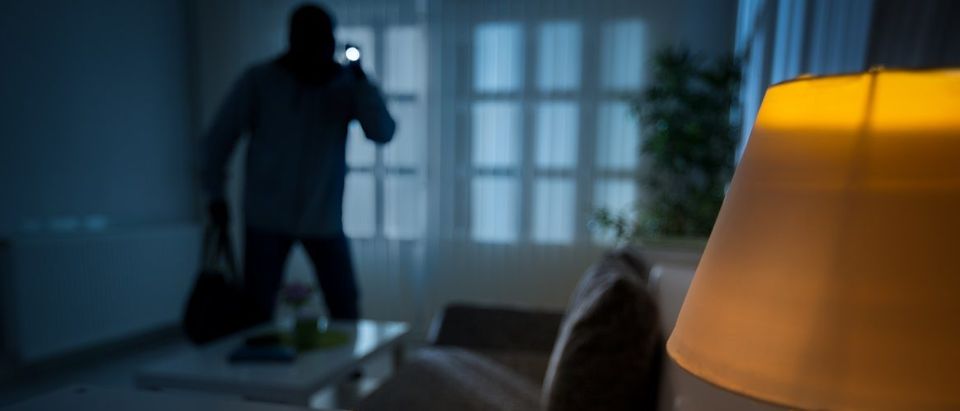By Sam Hoober, Alien Gear Holsters
More people are installing an attachment on their concealed carry pistol than ever, with weapon-mounted lights and laser sights being some of the most popular. Red dot optics are also a real up and comer; they may even replace iron sights at some point.
However, a pistol obviously has limited real estate, so unless a person is getting one of the combination attachments that has both, should a person get a light or a laser?
The light. Or, if you have to have one, get a light with a laser attachment.
Okay, so there are two primary reasons for mounting a laser on a pistol. First is because your vision is deteriorating and second is for indexing on the target in low light conditions. This is a folly.
As to the eyesight problem, a red dot optic that has a night setting or has dual illumination features is a far better solution. Modern red dots are a digital version of a reflector sight, projecting a holographic dot on the optic window. The image isn’t created by reflection of ambient light; it’s projected onto the screen. Old eyes will see it.
A weapon-mounted light is drastically better than a laser for low-light conditions because – shocker – it creates light, and thus obviates the need for the laser. A laser sight is also not the most precise tool, and many people who have them don’t actually use them properly.
And why, you ask?!
Okay, so here’s the inherent problem with lasers.
A laser emits a beam of light, with the dot appearing where the user points it. With some notable exceptions (which I’ll get to) most lasers have a significant offset from the bore either vertically, horizontally, or both.
Why does this matter?
The dot isn’t going to be visible until the target is a certain distance away, because the pistol itself is in the way. Granted, how far that is varies depending on where on your pistol the laser is mounted. The larger the vertical offset, the farther that distance will be. Eventually, the dot becomes visible, but because there is an offset, the point of impact will likewise be offset from the dot.
You can zero some lasers, but this creates further problems.
Let’s say you adjust a laser so the dot appears just above the front sight at close range; let’s say five yards for the sake of discussion. The laser is blocked from your vision by the pistol at closer ranges. At double the range you zero the laser for, the point of impact will be the same as the offset from the bore. If your laser is, say, 1 inch to the left of the barrel and 1.5 inches low, that’s how far away from the dot the bullet will land at double the distance of zero.
In other words, your shot lands somewhere other than where you put the dot of the laser sight. That means either you have to hope that the bullet does vital damage or you have to use Kentucky windage in the dark, and that’s using less brains than God gave a turnip.
About the only worthy exception I’ve come across are laser guide rods. Since they sit about a half an inch under the barrel, that means the point of impact is only that distance away from point of aim until the bullet actually starts to drop below point of aim in its trajectory.
That depends a lot on the caliber and bullet you’re using; for 9mm pistols, which is what almost everyone carries, that happens somewhere between 60 and 80 yards, depending on the load. 10mm pushes that out to 100.
Unfortunately, there are darn few companies making them and the only ones I’ve consistently found are for Glock pistols.
To bring this home, lasers are an imprecise tool. At best, it’s point shooting with 21st century technology.
Granted, is that such a bad thing? Not really; point of impact isn’t ridiculously far from point of aim at self-defense distances and if you get the dot on the thoracic cavity – hey, you’re hitting COM. So you’re in the ballpark.
But that also presumes you’re able to see the target; those dots don’t really light up too much around them. In truly low or no-light environments, such as at night with little ambient lighting, it’s just not enough. A weapon-mounted light thus becomes necessary.
Paired with night sights on your pistol, you’ll be able to properly see the target AND place the shot and – as we all have likely heard – speed’s fine, but accuracy is final!
How much more obvious can the benefits be? A light works better than a laser in low-light conditions because IT’S A LIGHT. It allows for more precise shooting because you can use the sights, so point of impact/point of aim doesn’t change.
If you have to choose between those two attachments, get the light. If you think you need a laser, get one that’s attached to a light. It’s the better all-around tool for self-defense. That’s probably why most cops have them these days.
Click here to get your 1911 Pistol Shopping Guide.
Click here to get The Complete Concealed Carry Training Guide
Sam Hoober is a Contributing Editor to AlienGearHolsters.com, a subsidiary of Hayden, ID, based Tedder Industries, where he writes about gun accessories, gun safety, open and concealed carry tips. Click here to visit aliengearholsters.com.


